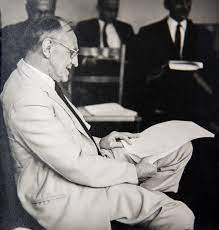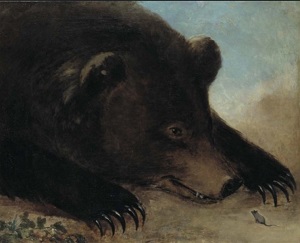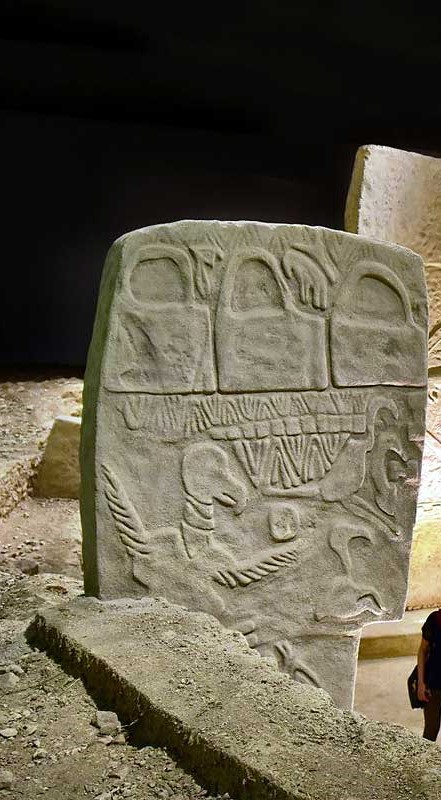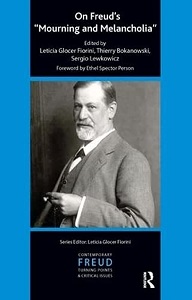THE RAW MOMENT OF I AM

ABSTRACT
Winnicott described the development of the moment of I AM in various papers. This paper especially focuses on his speech, ‘Sum, I AM,’ and reviews Winnicott’s definitions of the raw moment of I AM. The answer to the question “Who are you?” has a special place at the emergence of unit self. While the child identifies himself, he identifies both his mother and father too. Anxiety plays a major role in the division of self into parts and their projection onto objects. At the same time, the dependence of a child on his mother affects his psychosomatic unity. The Pied Piper of Hamelin demonstrates how exploitation of intellectual capacity can threaten psychosomatic unity and going on being. Psychosomatic disintegration can disturb the processes of separation, individuation and grief. A mother’s ego support plays a vital role in sustaining the child’s pleasure of being I AM and maintaining his libidinal investment in the development of independence. Winnicott underlines the importance of the mother’s ability “to be,” which he defined as the female element. The problems of “being” come to the fore in clinical practice, with the search of answers to the question, ‘Who AM I?’. So, it is important to have a theoretical background during this search with the patient.
Winnicott’s elaborations on the raw moment of I AM are summarised in his speech, ‘Sum, I AM’, in which he especially focused on how additions to ego, subtractions from it and divisions of it affect the development of I AM. He underlined the importance of intellectual capacity and the danger of dissociating it from psyche-soma. There is a risk of falling down during the integration of self. There is also a risk of being maimed on the way to being. At the beginning of integration, the mother’s and her substitutes’ ego support are vital for the child. The mother’s ability ‘to be’, which Winnicott defined as the female element, forms the basis of unit self. A problem with the mother’s female element of being, a problem of the child’s identifying with it or a dissociation of female and male elements inevitably bring forward the basic question of ‘Who AM I?’
At the beginning of ‘Sum, I am’, which Winnicott (1968) gave to teachers of mathematics at a London, teachers’ training college, he requested the audience allow him a wholeness, having some degree of integration and unity. He tried to be himself and he wanted to share some parts of himself without losing them. He summed up psychoanalysis, child development, mathematics, and psychology of religion in this speech.
‘Sum’ is a 14th century Latin root word (Merriam-Webster, 2018) which means the total amount resulting from the addition of two or more numbers, amounts, or items; a particular amount of money; a summary of the chief points or thoughts; the whole amount; the utmost degree. In order to sum up some elements, they have to be in the same group or similar to each other.
Winnicott (1968) emphasized that to arrive at and to maintain a unity at the stage of I AM are central features in both human development as well as in mathematics, a disembodied version of the human personality. Mathematical thinking and calculations were dissociated and developed by mathematicians away from our day to day lives. For instance, high school students search for the meaning of mathematics in life, wondering where they would ever use such advanced mathematics in their lives. Here he seemed to warn not to dissociate too much in order not to lose meaning and unity.
Winnicott (1968) was aware of the dependence of human beings. He observed that this dependence on environment is more at the beginning of life and decreases with maturation. As the child identifies with his environment he becomes more and more independent. It is a process of becoming more independent with the help of dependency. Dependency gives the child a chance to identify with objects and helps him to be a unique being.
When a child arrives at the stage of I AM, he has to sum up and integrate different parts of himself. He also has to reject the parts that he does not want to have. In order to achieve this, the child needs to identify the objects in his world and categorize them. The ego nuclei are organized, and the external world is rejected during psychological development. Winnicott defined this as the ‘I’ stage. The quality of the ego existence emerges, and ego begins to live at the next stage of ‘I AM’. At the beginning of this stage, the ego is raw, vulnerable, defenceless and prone to be paranoid. (Winnicott, 1958, p. 418)
WHO ARE YOU? I AM THAT I AM
Winnicott (1968) proposed that the struggle to reach the concept of I AM is reflected in the early Hebrew reference to God. When Moses first encountered God, he asked God’s name so that he could tell it to his people. God replied, ‘I am that I am’ (Holy Bible: King James Version).
The answer, ‘I am that I am’, in answer to the question, ‘Who are you’, is not an answer in everyday life although it can be seen as a stage of development, albeit indistinctive. There is no name but there is the sign of existence and the ability to speak. The definition of ‘I’ is also ambiguous at the beginning of ego organization. ‘I am that I am’ has a tone of grandiosity too that could be a defence to uncertainty. The answer shows the projection on the self and cathexis on self. A name which can be projected and introjected symbolically doesn’t exist. There is still more need for the mirroring function of the m/other (Winnicott, 1971b).
We observe a similar phenomenon in psychiatric examinations of patients with dementia who become like children and lose their cognitive abilities. Patients with dementia lose their memory and begin to lose their time, place and person orientation. If you ask a person with dementia who he is, you could get the same answer: ‘I am that I am’. This is because he cannot identify and remember his name, but he can identify that he is an individual person. In addition, paranoia is seen in these patients because they cannot categorize who is good or bad due to their loss of memory and ability to differentiate.
ONE, TO/TWO, THREE
From another point of view, the stage of I AM is the stage of SHE IS, the mother. A child, like Moses, is the one who is always called by his name while the mother does not have a name at the beginning of the life of the child. SHE IS only the mother. SHE IS the mother of other sisters and brothers too. The mother is the one who protects with her warmth felt through her touch from the very beginning. When the child arrives at the stage of I AM, it is probably more difficult to identify his mother than to identify himself, compelling him to integrate in his mind, someone who produces milk and does very complex things. The other difficulty is that when the baby begins to identify himself, he realizes that there is another person to identify in his life.
According to Winnicott (1958), when people first came to the concept of individuality, they quickly projected it to the skies and gave it a voice that only a Moses could hear. As with mankind, the state of I AM in personal development is accompanied by anxiety. It is also seen in the boy at play who builds his own sand castle and declares to the world: ‘I’m the King of the Castle.’ Immediately after which, he shouts to his friend: ‘You’re the dirty rascal!’ as if defending himself against attack or charging at the enemy. When the self and object representations are further organized, and the ego becomes more powerful, uncontrollable fear is projected toward the object.
When the child controls his own space and builds his sand castle -as with the integration of the mother representation in his mind-, he attacks his rivals, including his father and brother,. In the I AM stage, mother and father are represented as a couple, so being one is being three at the same time.
Winnicott (1958) explained that persecution anxiety at the achievement of unit self makes it easy to divide the self. As in the projection of unit self, which is one, alone and only to God in monotheism, division of self into three is also projected to God as the Trinity. Three is special because it is the number of members in a nuclear family.
On the other hand, the ease of division enables the unit self to identify with wider units, like family. Through identification, the unit personality is part of a wider concept of wholeness. As a part of different and wider groups, the child’s identifications in his social life sum up to what can be termed world-citizenship. Although Winnicott did not go into detail in ‘Sum, I am’, he did put the concept of identity above that of self. An integrated self and an ego that can say I AM, can organize different roles of self and object representations. As new self and object representations evolve through the identifications with family, school, national and ideological groups, a unique identity develops.
EXPLOITATION OF INTELLECTUAL CAPACITY
Achievement of the stage of I AM has a relation with intellectual capacity. Winnicott (1958) explained this with two children with high and low IQs. When the child with the higher IQ is hungry, he can tell from sounds hat a feed is being prepared. He would think, ‘That sounds like food is on the way, so I’ll just hang on and all will be well’.
In order to be able to think this, the child will have identified his mother and, in answer to questions like, ‘Who is my mother? What kind of a woman is she?’, he might say, ‘My mother is the woman who prepares my food. She is a lovely woman. She understands when I am hungry and always feeds me.’
While this intellectual capacity helps to tolerate frustration, an unwilling depressive or an obsessive that has issues with dependency, or a joyful hysteric mother who has emotional fluctuations could exploit her baby’s intellectual capacity. If the mother exploits her baby’s intellectual capacity and makes him wait for longer than he can manage, each would lose a satisfying relationship that could have improved them both. Such a catastrophe would bring about dissociation of the child’s psychic and somatic development.
The Pied Piper of Hamelin, which a patient of Winnicott (1958) had memorized in her childhood, is a good example of such exploitation leading to dissociation and disintegration.
In the tale, Hamlin is overrun by rats when there are no cats to keep their numbers under control. A tall man with a golden pipe approaches the mayor and the city council saying he can help them get rid of the rats for a thousand florins. The mayor is very happy and promise to pay fifty thousand. The piper lures the rats out of the city with his pipe playing and leads them down to the river where they all drown. The mayor then reneges on his promise and refuses to pay, angering the piper who then mesmerises the children with his music and leads them out of the town and away from their families forever
The ability to play the pipe and in doing so get rid of destructive greed and filthy vermin -which represent pre-oedipal problems- is a highly prized gift. The exploitation of these abilities by the mayor leads to the loss of children. One of the lessons of the tale is that if the father is not true, and if he is someone who exploits, he could lose his children in the end. So, truth brings ‘going on being’ and lies bring the loss of being. This terrible end, of the children being denied the opportunity ‘to be’, is a result of the dissociation of true and false selves strictly through exploiting. In the beginning, the gifted, true self and the lying, false self, have the chance to come to an agreement on a solution and a prize, but exploitation destroys the relationship. Alternately, if a compromise between true self and authority were formed, fascinating abilities could help the child rid himself of his pre-oedipal difficulties.
On one hand, to say, ‘I AM’ and to form a compromise are about mind. On the other, ability is inborn and belongs to the body. The moment of compromise formation between them is important because this would be a profitable sum for each. As in the tale, to dissociate it or to exploit it, could result in the loss of childhood and the loss of generations.
UNIT SELF AND WHOLENESS
Winnicott (1958) categorized three types of children according to their ability to learn maths. One category is children who have not achieved unit status, and for whom one means nothing.
Winnicott warned not to expect any joy from this group while they played with bits and pieces, because such games could mean fear and chaos for them. They need a stable environment that would enable some degree of personal integration. Looking after a pet would be useful, for example. Caring for a “unit” pet, holding it and nourishing it would integrate the child and allow him to feel some sense of wholeness.
Infants begin to have a self and the mother becomes a ‘whole object’ in the child's mind with the help of the mother’s through holding and nursing him. Winnicott (1963) nicknamed this the ‘humpty-dumpty stage’. Humpty Dumpty is an egg character that fell off a wall, broke into pieces and could not be put back together again. Winnicott commented that the wall on which Humpty Dumpty is carelessly sitting represents his mother’s lap. If the mother ceases to offer her lap at the moment of being a brave new self, the baby would fall off, and like an egg, disintegrate.
In explaining how to establish a stable environment, Winnicott (1958) cautions of loss, which could be a quite normal outcome for a child caring for a pet. Death could destroy the chance of integration and wholeness. Perhaps to prepare the child for death and to guarantee a second chance, would protect the development of integration. Of course, the best would be to help him take care of the pet.
Wholeness not only makes death more bearable, allowing us to grieve and experience a sense of relief, but also provides a better understanding of loss. Psychosomatic disintegration leads to the death of the body but leaving the spirit as a ghost. In the 1960s there was a soul for everybody, but in the 2010s, souls disappeared, and bodies become immortal as “walking dead” zombies. The increase in movies and TV series about zombies shows this difficulty. There are two main problems: “Where is the soul? How will the body die?” And at the end, how will there be grief that allows the child to separate and become a self-unit.
Psychosomatic disintegration disturbs the process of being I AM, and grief becomes impossible. This has a relation with dependence to somatic existence and difficulty in having a psychic space. Also, the lack of a psychic space to work on grief locks the person in the soma. If somatic loss with death cannot be accepted, and grief cannot replace the possessions and memories of the dead person, he becomes a ghost in the real world.
MOTHER’S EGO SUPPORT
The baby can’t develop his own inherited capacities without such a human/motherly environment that identifies with baby’s needs. This identification provides a basic unity which is the union of baby and mother. If all goes well, the baby comes to perceive the mother and all other objects and to see some of these as ‘not me’ and some as ‘me’.
A mother who is good enough in adaptation and de-adaptation helps the baby to arrive at the beginnings of I AM stage. An established and incorporated unity which is reliable and safe for the baby is substituted by an uncomfortable I AM unit. So, the mother has to provide an ego support for the newly developing ego of the baby (Winnicott, 1958). The baby needs this support in order to sustain his pleasure of being I AM and to maintain his libidinal investment to separation and independence.
Throughout schooling and education, becoming an I AM continues and becomes stronger. Faults, missed or incomplete parts of parenthood are dealt with and worked on with teachers and friends. Hence, Winnicott (1958) noted the importance of teachers as inheritors of parent’s ego support. A bad example of this ego support is a teacher that ridicules the child for his faults. I could also add the threatening manner of a teacher who is afraid to play.
TO BE OR TO DO
Winnicott’s (1971a) vignette of a male patient in “Creativity and its origins” in Playing and Reality demonstrated how dissociated identity disturbed the ability to say I AM. The patient, who had been raised as a girl in his early years because of his mother’s wish to have a daughter, had undergone psychoanalysis from different analysts for 25 years. A pure female part remained untouched through these years. When Winnicott realized that the male patient was manifesting penis envy in a session, he understood that he was listening to a female. When he interpreted this, first the patient thought that it was his madness, but Winnicott added that it was the madness of the one who had listened to him and treated him like a girl. The pieces settled in the man and after this vignette, Winnicott went on to describe some aspects of male and female elements in humans.
Winnicott described the male element as a part that deals with objects in terms of actively relating or passively being related to them on the basis of drives. So, the male element “does”. The pure female element relates to the breast and becomes the breast by “being a union” of object and subject. When a baby sucks at the breast he becomes the breast/mother. Winnicott put this sense of being before the sense of “being a union” because there is nothing except identification at that point. Here the object becomes the subject. So, the female element is to “be”. This is a form of relationship in which Winnicott couldn’t see any effect of drives.
At this stage of primary identification, the baby has primitive perception abilities, cannot see and hear well, he has very poor memory. Therefore, perceiving an object is a major problem. Winnicott knew this as a paediatrician, and he reminds us that primary identification does not need a mature intellectual or perceptive capacity. It is seen at the very beginning and the experience of being starts from birth.
Winnicott saw this relation as the basis of the psyche on which to build an inner space, the capacity to contain, the introjective and projective mechanisms and to relate with outer world by these instruments could evolve.
BEING MAIMED ON THE WAY TO BEING
When something goes wrong during the development of organs especially in the first three months of life in the uterus, the baby becomes maimed physically. It is very similar to Winnicott’s (1971a, p.81) assumption that during the development of ego and its functions, if something goes wrong with being, ego and self will be maimed. This negative outcome could make the baby develop without the capacity to be. This, if the baby is lucky enough to develop other ego functions of living and having relations, leaves the question ‘Who AM I?’ in the unconscious unanswered. The question comes forward at difficult times and crises in life, such as loss, immigration or promotion.
A young female patient had a contemptuous father who asked her ‘Who are you? Are you the one who can answer this?’ while he was teaching her mathematics. This contempt made her doubt her abilities, especially in mathematics. When she first came to me, she was suspicious about herself and boundaries in her relationships. She couldn’t say ‘I AM the one who knows.’ Luckily, she had had some ego support from her primary school teacher who saw that she can solve problems and she is a clever girl and encouraged her. This led her not to lose all of her ability to play. She graduated from university and became a social worker. During her therapy, she began to say, ‘I AM the one ...’. Two factors that had destroyed her ability to play and continue her relations were becoming sexualized and becoming paranoid.
TO BE....OR.... NOT TO BE
Winnicott (1958, p. 83) took Hamlet as a case which has an awful dilemma on how ‘to be’. He said Hamlet didn’t know the alternative so he had to stop a while after the words ‘to be’. Hamlet comes to the banal alternative of ‘... not to be’, which is a sado-masochistic solution. Winnicott thought this was because Hamlet had dissociated his male and female elements after his father’s death. He interpreted Hamlet’s cruel attitude towards Ophelia as the rejection and splitting off of the female element. Winnicott believed that if Hamlet had the chance to read or see his play, he would understand the nature of his dilemma. Here he showed the importance of observing ego function giving the ego the opportunity to work through the problems of self, and at the same time, affording it the opportunity to have a transitional area. But as a character in a play, Hamlet “is” the transitional area which has the difficulty “to be”.
We see such problems in some of our patients in times of crisis. When the male and female parts are dissociated and being becomes a problem, there comes the question of ‘Who AM I? What is my problem?’ This problem can be resolved in psychoanalysis or psychoanalytic psychotherapy, where the patient can see, as in a mirror, who he is. Of course, Hamlet doesn’t have the luxury of a mirror as a character in a play, so he cannot connect his male and female elements and to have cross-fertilizations in his inner world that could lead to the creation of new solutions.
CONCLUSION
This raw moment of I AM is an important stage in the process of development. The child needs a female mother “being” to be in who can provide her baby a union through holding. Gradually, as the child develops physically and psychically, he begins to identify himself and his mother. The Child needs the mirroring function of his mother while identifying himself. Then a barrier of ‘me’ and ‘not-me’ occurs through additions and subtractions. As the unit self emerges through integration, aggression and anxiety become threats of division. The child wants to possess and protect his mother representation against his rivals. The exploitation of intellectual capacity to add, subtract and divide causes a malign division of psyche-soma which can disturb the processes of individualization, separation and going on being. Ego support through care giving and joyful playing can help to maintain unity in these problematic times. Ego support in order to sustain the child’s pleasure of being I AM would encourage his libidinal investment to separation and independence. Being in wider groups which the child can identify enriches the unit self.
In the end, the most important thing is mother’s lovely being, holding and care giving that allows the child to become a unit self and gives him the ability to find answers to his question of ‘Who AM I?’








